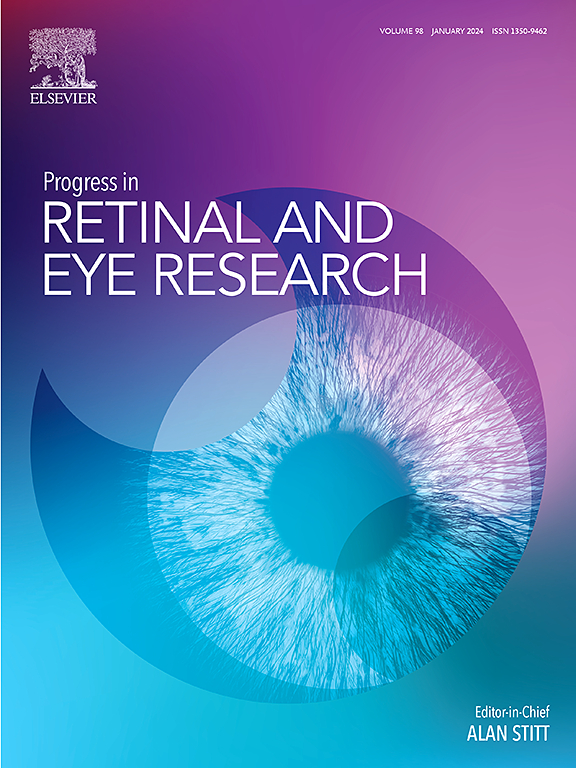Widefield OCT angiography
IF 14.7
1区 医学
Q1 OPHTHALMOLOGY
引用次数: 0
Abstract
Optical coherence tomography angiography (OCTA) is a volumetric, non-invasive, high-resolution vascular imaging modality capable of acquiring highly detailed visualizations of retinal microvasculature. It has become an important tool for diagnosis and prognosis in prevalent diseases and pathologies such as diabetic retinopathy, retinopathy of prematurity, and vein occlusions, as well as more rare conditions, including inherited retinal dystrophies. It is also useful for measuring treatment response and assessing which patients would benefit from treatment. Unlike dye-based angiography, OCTA eliminates risks such as anaphylaxis. It also often outperforms fundus photography in feature detection. However, conventional OCTA imaging has been limited by its small field of view, which restricts simultaneous visualization of the posterior pole and peripheral retina, causing single images to potentially miss widely spaced critical biomarkers and pathological features. Recent technological advances in widefield OCTA have addressed this limitation, extending the field of view to the mid-periphery and beyond. This breakthrough enhances the simultaneous detection of macular and peripheral retinal pathology and significantly broadens OCTA's diagnostic and research applications. This review explores the technical innovations enabling widefield OCTA and highlights its clinical utility across various conditions, emphasizing its growing importance as a powerful tool in ophthalmic practice and research.
广角OCT血管造影
光学相干断层血管造影(OCTA)是一种体积、非侵入性、高分辨率的血管成像方式,能够获得视网膜微血管的高度详细的可视化。它已成为糖尿病视网膜病变、早产儿视网膜病变、静脉闭塞等流行疾病和病理以及遗传性视网膜营养不良等更罕见疾病的诊断和预后的重要工具。它还有助于衡量治疗反应和评估哪些患者将从治疗中受益。与染料血管造影不同,OCTA消除了过敏反应等风险。在特征检测方面,它也经常优于眼底摄影。然而,传统的OCTA成像受到其小视野的限制,这限制了后极和周围视网膜的同时可视化,导致单个图像可能错过间隔广泛的关键生物标志物和病理特征。宽视场OCTA的最新技术进步已经解决了这一限制,将视野扩展到中边缘和更远的地方。这一突破增强了对黄斑和周围视网膜病理的同时检测,并显著拓宽了OCTA的诊断和研究应用。这篇综述探讨了实现宽视场OCTA的技术创新,并强调了它在各种情况下的临床应用,强调了它在眼科实践和研究中作为一种强大工具的重要性。
本文章由计算机程序翻译,如有差异,请以英文原文为准。
求助全文
约1分钟内获得全文
求助全文
来源期刊
CiteScore
34.10
自引率
5.10%
发文量
78
期刊介绍:
Progress in Retinal and Eye Research is a Reviews-only journal. By invitation, leading experts write on basic and clinical aspects of the eye in a style appealing to molecular biologists, neuroscientists and physiologists, as well as to vision researchers and ophthalmologists.
The journal covers all aspects of eye research, including topics pertaining to the retina and pigment epithelial layer, cornea, tears, lacrimal glands, aqueous humour, iris, ciliary body, trabeculum, lens, vitreous humour and diseases such as dry-eye, inflammation, keratoconus, corneal dystrophy, glaucoma and cataract.

 求助内容:
求助内容: 应助结果提醒方式:
应助结果提醒方式:


